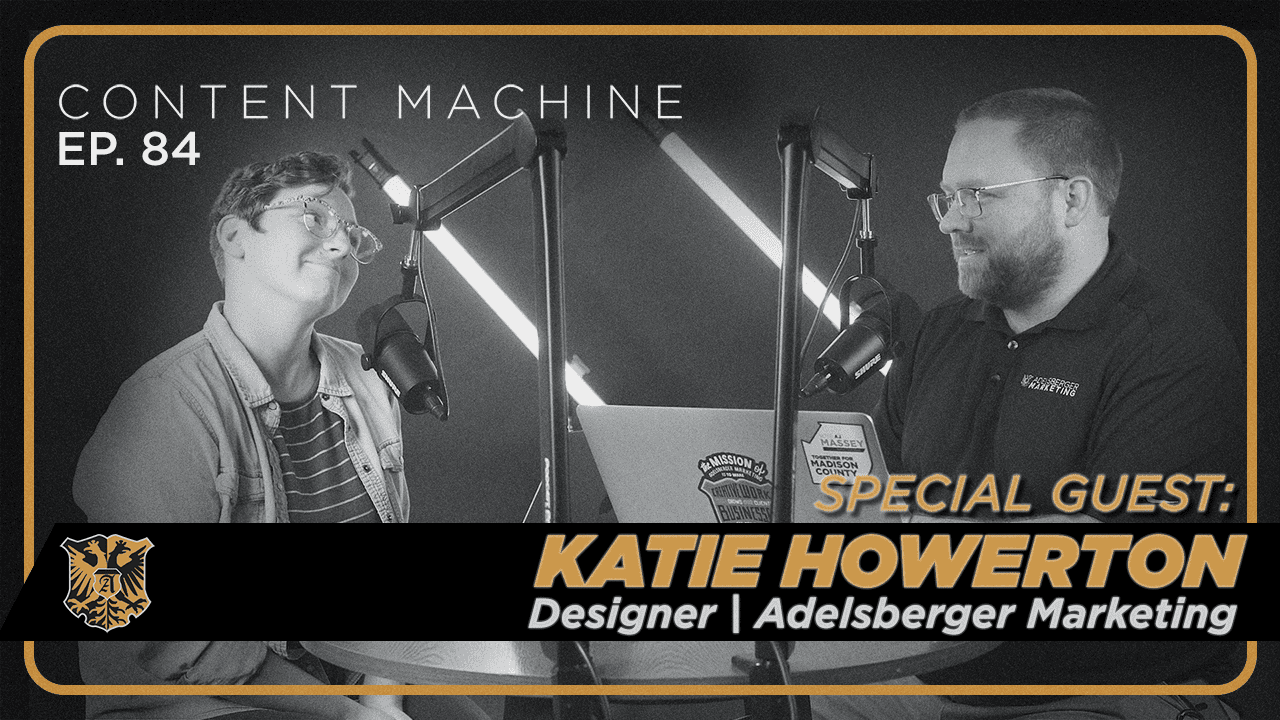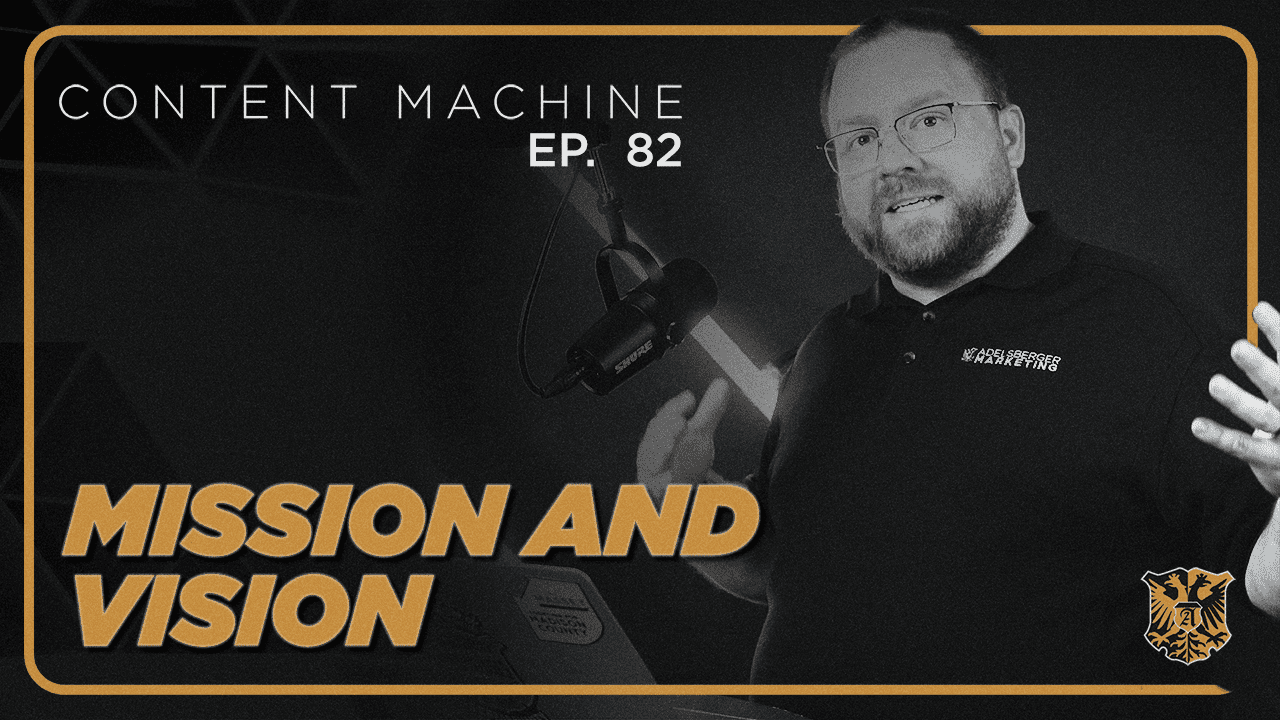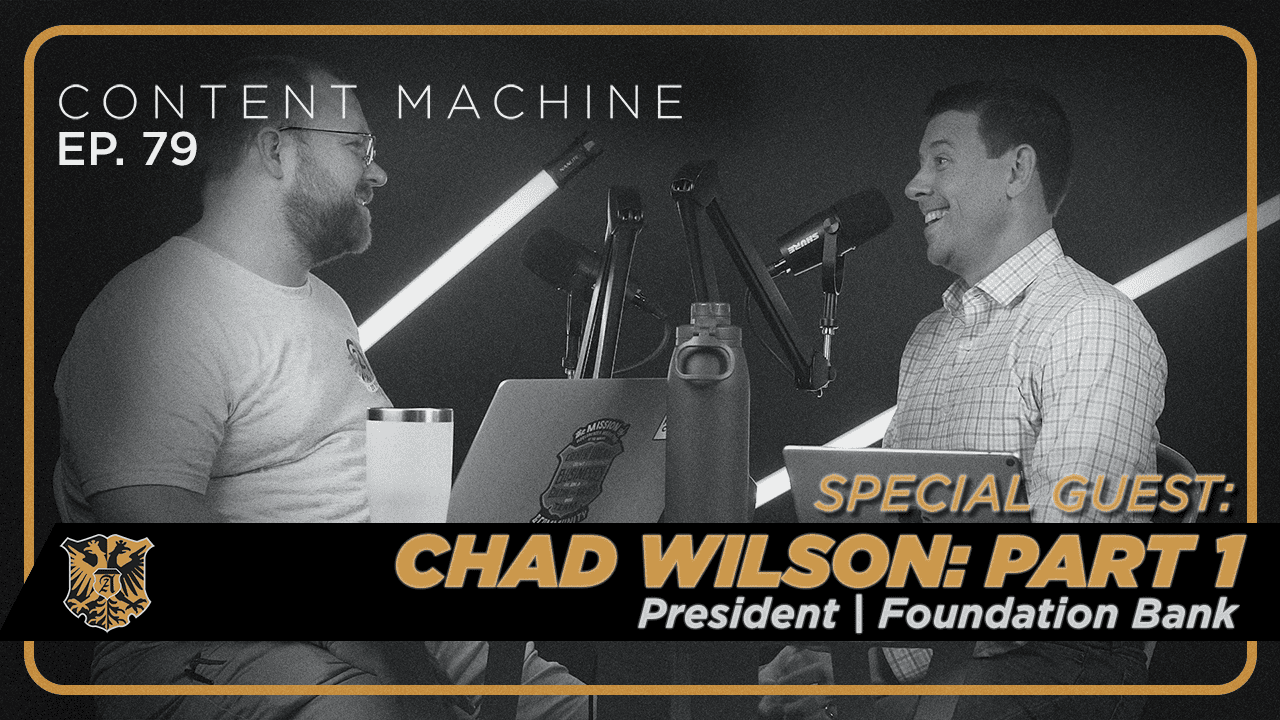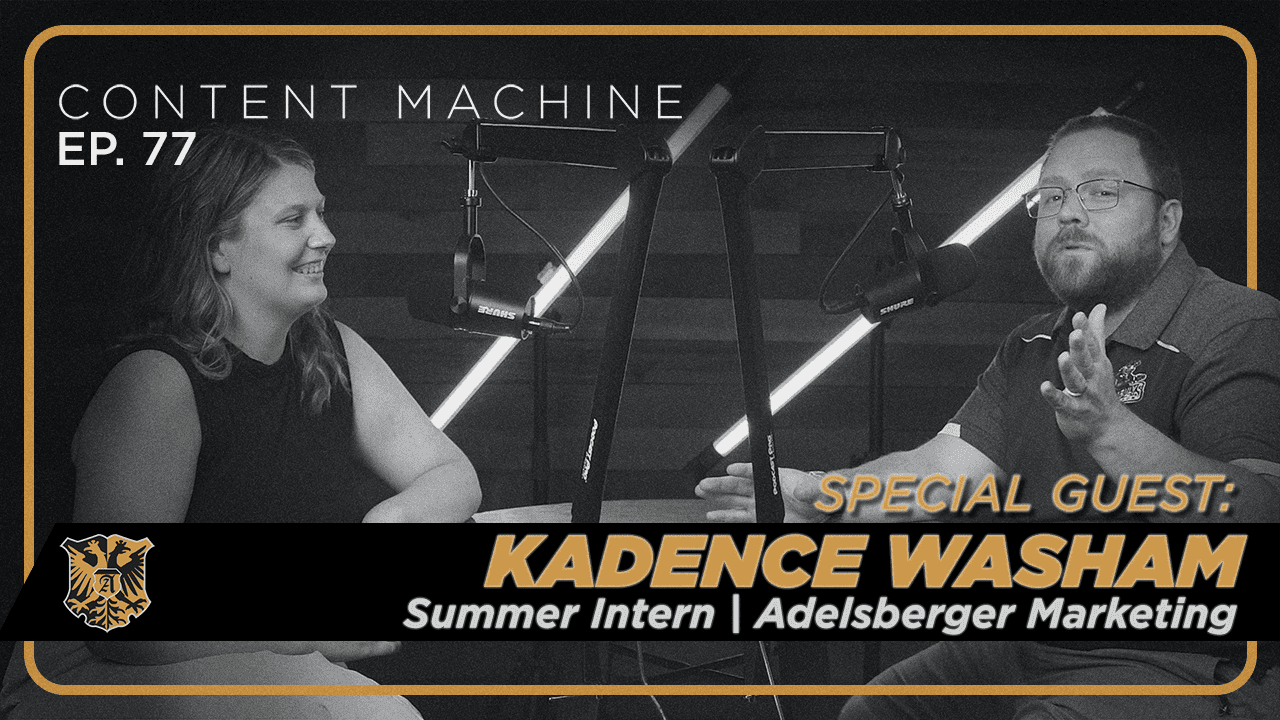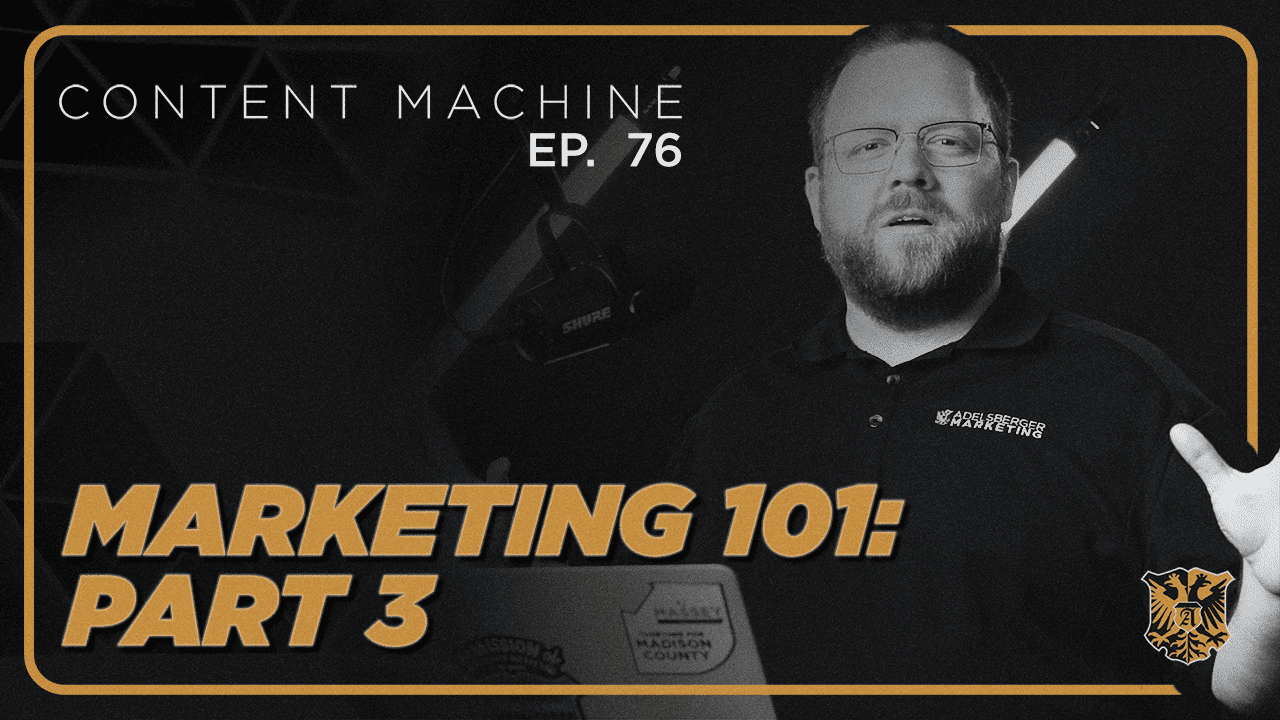Kevin
Welcome to the Content Machine, I’m Kevin Adelsberger, and this week we are joined by Katie Howerton, who is a graphic designer at Adelsberger Marketing. We want to talk to Katie about some stuff in the graphic design world. Katie, you are known for your hand lettering and your love of all things that is type. Can you give us a rundown of some of the basic terminology that people should know when they’re thinking about type?
Katie
Most people, when they think about type, the first thing they think is font, which is valid. But that can encompass a lot of different things. When you’re talking about fonts, there are three main groups: sans serif, serif, and slap serif. There’s also hand lettering and calligraphy, things like that. But essentially, serif is French for feet. And so sans serif means without feet, serif means with them. So essentially, that’s going to be your difference between a Helvetica and a Times New Roman. That may mean nothing to someone listening, but essentially something that has curved edges, like a Roman look, versus something that is nice and sharp and modern. Slap serif is a good in between in that it has those edges to it, but they’re nice and sharp and not… They’re a more modern look. So essentially, when you’re… That is the three kinds of fonts you can choose from. Obviously, within that, there is bolding your type, italicizing your type. Often, there are different weights, which essentially means how skinny is letter, is it condensed, is it spread out? And often, there’s a lot more choices there than you necessarily need to make. But essentially, when you are picking a font, you are trying to pick something that matches the tone of your business or of specifically what it is doing in that moment. So there’s going to be a difference between what is easy to see and read and matches the voice of a title versus an entire website’s body copy. So, yeah. So those are a few things, as well as font size. That’s something we’re all familiar with. But there are a few rules within that, unspoken rules about this is too small to read, this is too big to fit a word across the line. There are obviously also specifics that you can get into that the designer will get into, but probably not the client, of letter and line spacing. And then your biggest question in the end to ask is, is it legible? Which seems really like a silly question. Legible means you’re able to read it, i. e. your handwriting, Kevin.
Kevin
My handwriting is very good.
Katie
But then there’s also readability, which is technically different in that once something is in a body of text, can you read through it without having to pause and check it. Legibility is ‘can I see what the letters are’, readability is ‘if I see a paragraph of this text, is it easy to read? Or is it clunky or takes longer than it should’.
Kevin
Now I’ve heard in books that you always use serifed fonts because it’s easier to read and then on your phone, you’d see a sanserif font, your text messages.
Katie
I don’t know the science behind that, but it’s true, in that things are easier to read on a screen if they’re sanserif, serif if they’re in print. I don’t know if it’s just muscle memory, honestly. There’s also the difference of light text on dark, how easy that is to read. And that will affect as well how… If you have something really ornate that’s light on dark, it’s going to be a lot on the eyes.
Kevin
That makes a designer’s choice more complicated or something to think through. I’ve heard the phrase font family before. What does that mean and why is that important for a brand?
Katie
So a font family, it sounds silly, but just imagine it like a family. So, primarily what people think of is like, here’s the font, here’s the bold version, here’s the italic version, there’s our family. But many fonts go far beyond that as far as they will have, like I mentioned earlier, a condensed version, a super bold version. They’ll have something called book, which means essentially the way that is easiest to read in body copy. So the great thing about if you have a very large font family with lots of options, is often you can build an entire brand off of one font family. So just like a family, they look different, but they have similarities. So they work together. There are also, I think of two fonts, Mr. Eve’s and Mrs. Eve’s, that are essentially the same fonts, but one is sans serif, one is serif. So they have integrations that make them work well together. So whether you’re picking multiple fonts or you’re working from one font family, you want to make sure that they call back to each other and they work together well.
Kevin
So that would be a phrase we use as pairing fonts together? Okay. All right. And then, if someone has a brand-specific font, how should they handle fonts? Because sometimes a brand-specific font, maybe in what we call the logo mark, you might not be able to replicate that in email or your word document. How should you approach … if your brand has a very specific font, how should you approach selecting a font for your email or your word documents?
Katie
Yeah, so, it’s a real struggle. I will say that in the design world there is a unspoken that a logo should never be just a font. It should always be a variation. Whether that’s incorporating imagery into the letters or tapering things, people shouldn’t be able to pull it up, type it, and say, Is there a logo? That’s what makes it unique. So often what we’ll do is, if you do have access to that font, you can use it for titles and stuff. You don’t want to overuse the main font because then it’s everywhere and your logo doesn’t stand out. But it’s subtitles, things like that. Those are really important to incorporate throughout your website or different areas. We usually work within Adobe fonts because Adobe programs are what we use.
Kevin
And most of the design world has access to.
Katie
Yes. Unfortunately, most clients don’t. They’re not doing their designing. I send them a brand package, they have their fonts, and they realize, oh, we’re using Canva, we’re using Google, we’re using things that don’t have access to these fonts.
Kevin
So this is an interesting point. Not every program that you have or not every computer that you use has access to the same sets of fonts.
Katie
Yeah, and fonts have changed over the years as far as how you use them. It used to be very standard to purchase a font, and that can still be done, but it’s just different, and it’s old school as well. It’s also a very expensive process if you want to own a very prestigious font. I’m trying to get better about using Google fonts on the front-end. Basically trying to say, these fonts are accessible everywhere. You can… The good thing is, too, unlike with adobe, it’s like a subscription system. If you have the access, you get it. With the google font, you can download that at any point and hold on to it.
Kevin
And it’s free.
Katie
Yeah. And it’s not a sketchy… This is a free font website that might give you a virus. So I try to work primarily off of those. If I really am attached to an adobe font, but I know they need something similar to be able to produce things on their own, then I will go into Google Fonts and just mix and match. Often, there are better designers out there who I can google, Hey, what’s a similar font to Helvetica? Because it takes a long time. So I’ll do that. And then also, something that I hadn’t really thought about until recently is a client using their Gmail, like you mentioned. I don’t think about fonts and email a lot, but if you want it to match the brand, that’s a very limited set, as well as a limited set within Microsoft, different things. So really, we’re trying to provide the client, ideally, with a font they can use anywhere, but if not, a really great backup that essentially creates the same effect.
Kevin
And I would say for email or Word processing, it’s really more important for legibility. Or readability, whichever I’m supposed to be saying. Thanks for tuning in to the first of two episodes with Katie Howerton talking about type. Stay tuned to your feed for the future episode where we finish this conversation.

